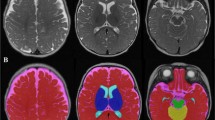Abstract
This project utilized twins to study differential mother-sibling interactions. The use of twins circumvented the traditional confounds of studying siblings of different ages or at two points in time. When the twins were 7 and 9 months of age, mothers spent 2.5 min alone with each infant in an attempt to elicit child vocalizations. The mother and infant behaviors were coded both microanalytically and globally. The infant attention behaviors were influenced primarily by unique environment, whereas the temperament behaviors were influenced by both unique environmental and genetic effects. Mothers tended to treat both children similarly, regardless of zygosity, suggesting that maternal characteristics drove the mother-infant interactions. Thus, even though identical twins were more similar on some measures than fraternal twins, mothers tended to treat both types of twins comparably regardless of infant characteristics or behaviors.
Similar content being viewed by others
References
Bell, R. Q. (1974). Contributions of human infants to caregiving and social interaction. In Lewis, M., and Rosenbaum, L. A. (eds.),The Effect of the Infant on its Caregiver, Wiley, New York.
Benson, J. B., Cherny, S. S., Haith, M. M., and Fulker, D. W. (1993). Rapid assessment of infant predictors of adult IQ: Midtwin-midparent analyses.Dev. Psychol. 29:434–447.
Cohen, J., and Cohen, P. (1975).Applied Multiple Regression/Correlation Analysis for the Behavioral Sciences, Erlbaum, Hillsdale, NJ.
Daniels, D., Dunn, J., Furstenberg, F. F., Jr., and Plomin, R. (1985). Environmental differences within the family and adjustment differences within pairs of adolescent siblings.Child Dev. 56:764–774.
DiLalla, L. F., and Fulker, D. W. (1989). Infant measures as predictors of later IQ: The Twin Infant Project (TIP).Behav. Genet 19(6):753–754.
DiLalla, L. F., Thompson, L. A., Plomin, R., Phillips, K., Fagan, J. F., Haith, M. M., Cyphers, L. H., and Fulker, D. W. (1990). Infant predictors of preschool and adult IQ: A study of infant twins and their parents.Dev. Psychol. 26 759–769.
Dunn, J. F., and Plomin, R. (1986). determinants of maternal behavior towards three-year-old siblings.Br. J. Dev. Psychol. 57:348–356.
Dunn, J. F., Plomin, R., and Nettles, M. (1985). Consistency of mothers' behavior toward infant siblings.Dev. Psychol. 21:1188–1195.
Dunn, J., Plomin, R., and Daniels, D. (1986). Consistency and change in mothers' behavior toward young siblings.Child Dev. 57:348–356.
Hauser, R. M., and Featherman, D. L. (1977).The Process of Stratification: Trends and Analyses, Academic Press, New York.
Joreskog, K. G., and Sorbom, D. (1989).LISREL 7: A Guide to the Program and Applications (2nd ed.), SPSS, Chicago.
McArdle, J. J., and Goldsmith, H. H. (1990). Alternative common factor models for multivariate biometric analyses.Behav. Genet. 20:569–608.
Pianta, R. C., and Castaldi, C. B. (1990). Stability of externalizing symptoms from kindergarten to first grade and factors related to instability.Dev. Psychopathol. 1:305–316.
Plomin, R. (1986).Development, Genetics and Psychology, Erlbaum, Hillsdale, NJ.
Robinson, J., Case, C., and Corley, R. (1990). Maternal differential treatment: Effects on the developing twin relationship. Poster presented at the International Conference on Infant Studies, Montreal, April.
Rowe, D. C. (1981). Environmental and genetic influences on dimensions of perceived parenting: A twin study.Dev. Psychol. 17:203–208.
Rowe, D. C. (1983). A biometrical analysis of perceptions of family environment: A study of twin and singleton sibling kinships.Child Dev. 54:416–423.
Scarr, S., and McCartney, K. (1983). How people make their own environments: A theory of genotype→environment effects.Child Dev. 54:424–435.
Schaeffer, E. S. (1989). Dimensions of mother-infant interaction: Measurement, stability, and predictive validity.Infant Behav. Dev. 12:379–393.
Stocker, C., Dunn, J., and Plomin, R. (1989). Sibling relationships: Links with child temperament, maternal behavior, and family structure.Child Dev. 60:715–727.
Thapar, A., Petrill, S. A., and Thompson, L. A. (1994). The heritability of memory in the Western Reserve Twin Project.Behav. Genet. 24:155–160.
Author information
Authors and Affiliations
Corresponding author
Rights and permissions
About this article
Cite this article
DiLalla, L.F., Bishop, E.G. Differential maternal treatment of infant twins: Effects on infant behaviors. Behav Genet 26, 535–542 (1996). https://doi.org/10.1007/BF02361226
Received:
Accepted:
Issue Date:
DOI: https://doi.org/10.1007/BF02361226




